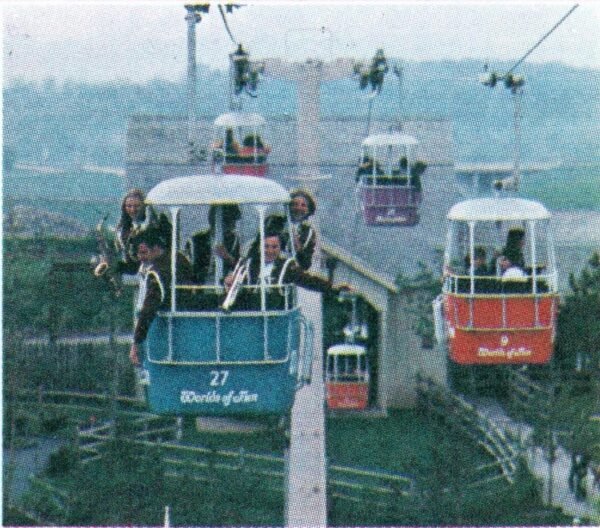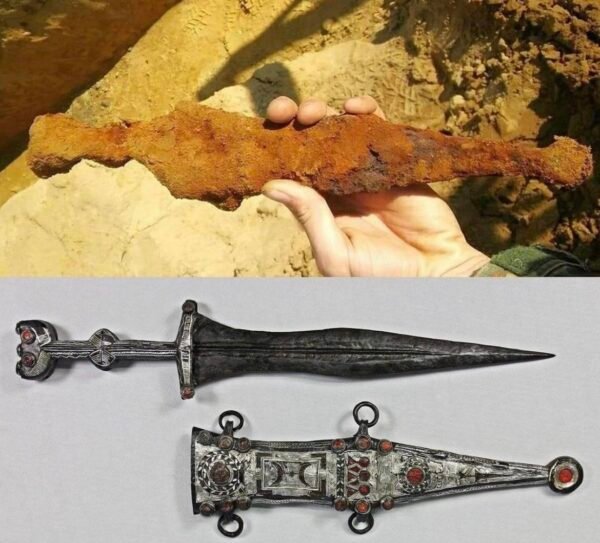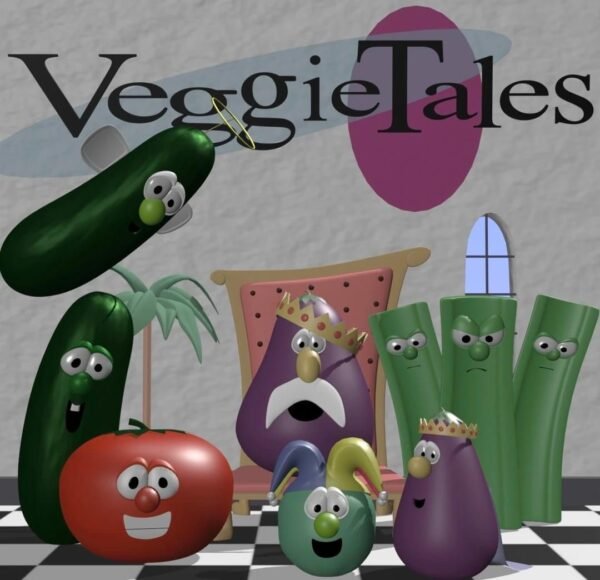Amidst the chaos and brutality of World War I, a remarkable moment of humanity and unity emerged—a moment that transcended borders and enmities. It was the Christmas truce of 1914 when German soldiers crowded around a Christmas tree somewhere on the Western Front, and for a brief, cherished time, peace prevailed.
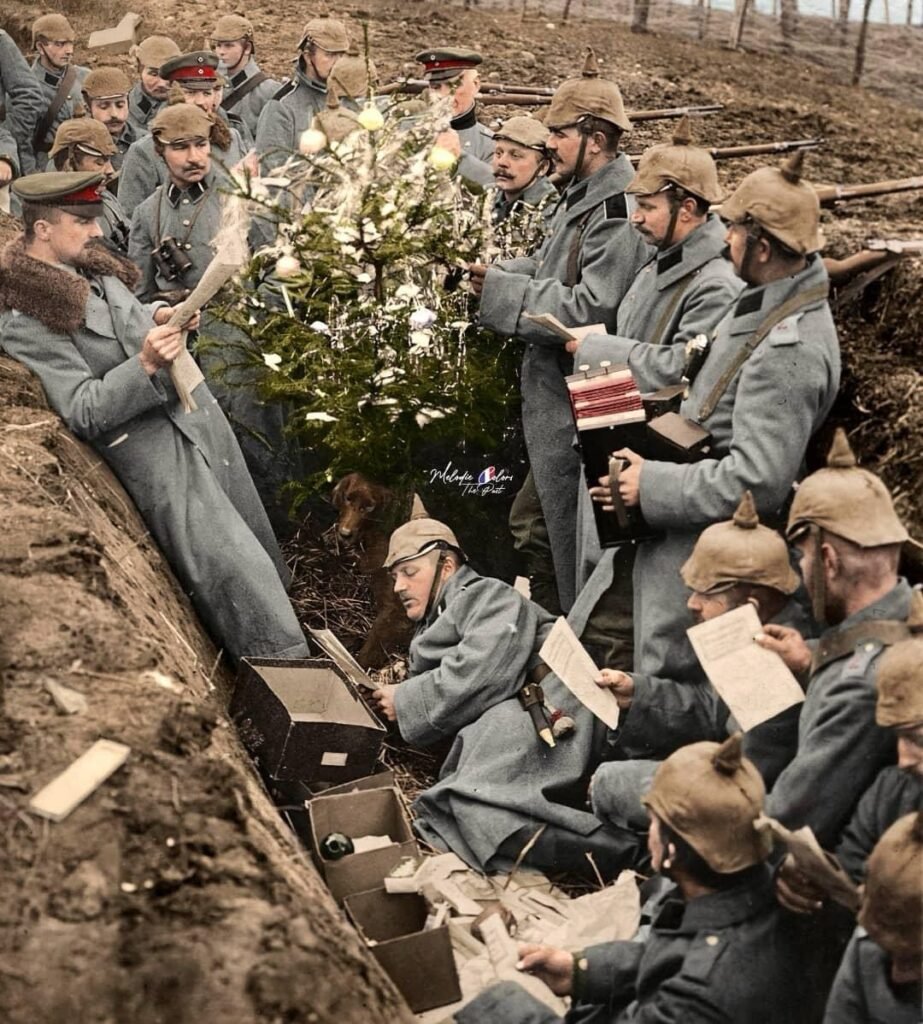
The Setting
In the winter of 1914, the trenches of the Western Front were a harsh and unforgiving place. Soldiers from different nations found themselves in the midst of a brutal conflict, enduring freezing temperatures and constant danger. The hostility between the opposing forces was palpable, but on one fateful night, something extraordinary happened.
The Christmas Truce
As Christmas approached, soldiers on both sides of the conflict began to notice something unusual. Christmas trees, adorned with makeshift decorations, started to appear in the trenches. Candles and lanterns flickered in the cold night, creating an atmosphere of warmth and comfort amid the desolation of war.
The Unthinkable Happens
Then, on Christmas Eve, a spontaneous and remarkable event unfolded. German soldiers, positioned just across from their British and French counterparts, began singing Christmas carols. The hauntingly beautiful melodies carried across the no man’s land, reaching the ears of their adversaries. Astonishingly, the opposing soldiers, who had been firing at each other just hours before, decided to lay down their arms.
A Moment of Unity
On that Christmas night, soldiers from both sides emerged from their trenches, cautiously at first, but soon with more confidence. They exchanged greetings, shared food, and even played impromptu soccer matches on the muddy fields that separated them. The bitterness of war temporarily gave way to the shared humanity of the season.
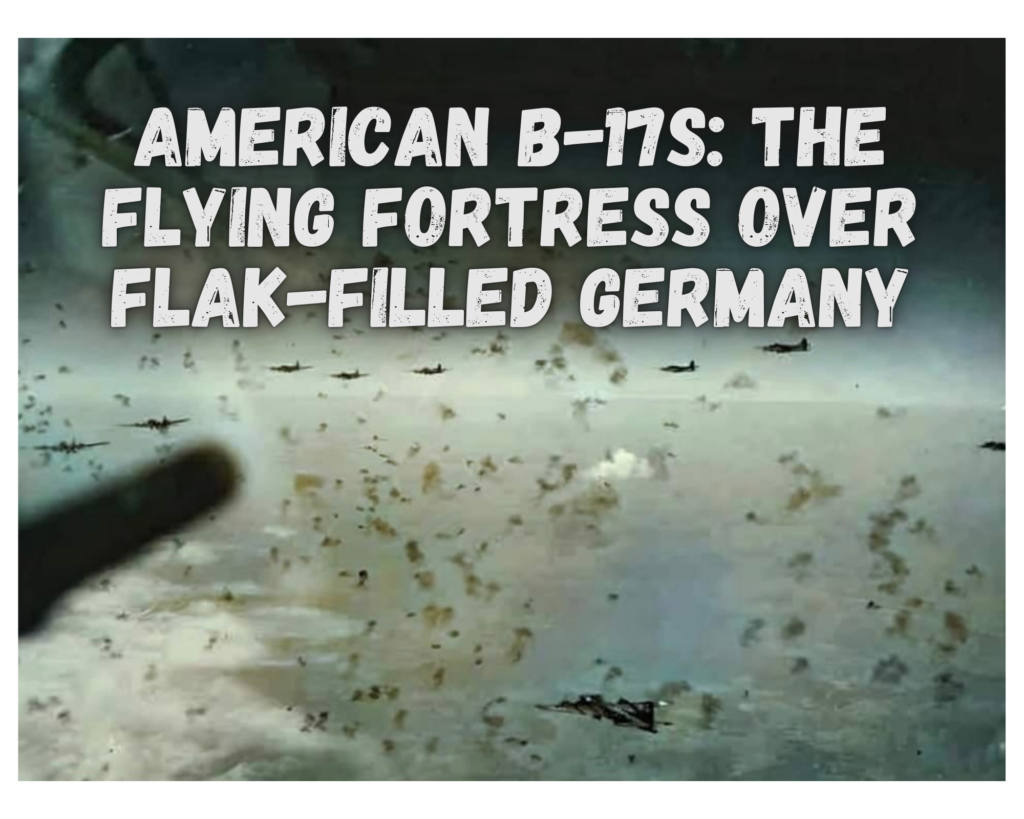
A Message of Hope
The Christmas truce of 1914 was more than just a temporary ceasefire; it was a powerful message of hope and the universal desire for peace. Soldiers who had been ordered to fight found common ground in their humanity. They exchanged small gifts, photographs of loved ones, and stories of home.
The End of the Truce
Regrettably, the Christmas truce could not last forever. Superiors on both sides soon ordered a return to hostilities, and the soldiers had to reluctantly resume their roles as combatants. However, the memory of that extraordinary night endured, and it became a symbol of the possibility of peace, even in the midst of the most dire circumstances.
A Timeless Lesson
The story of German soldiers gathered around a Christmas tree on the Western Front during World War I reminds us of the enduring human longing for peace and unity. It serves as a timeless lesson that, even in the darkest of times, moments of compassion and humanity can shine through, offering a glimmer of hope for a better future.
As we remember this remarkable event from a century ago, may it inspire us to strive for peace, understanding, and goodwill, not only during the holiday season but throughout the year.
Q: How did the Christmas truce of 1914 begin? A: The truce began with the spontaneous singing of Christmas carols by German soldiers in the trenches. This musical gesture of peace crossed enemy lines and touched the hearts of soldiers on both sides.
Q: Were there any formal agreements during the truce? A: There were no formal agreements or negotiations during the Christmas truce. It was an organic and uncoordinated event, driven by the soldiers’ desire for a respite from the violence of war and a shared celebration of Christmas.
Q: Did the higher-ranking officers support or oppose the truce? A: In many cases, higher-ranking officers opposed the truce and ordered their soldiers to return to fighting. The truce was seen as a potential threat to military discipline and objectives.
Q: How long did the Christmas truce of 1914 last? A: The truce varied in duration along different parts of the Western Front. In some areas, it lasted just one night, while in others, it extended for a few days. Unfortunately, the truce eventually came to an end as orders from higher command enforced a return to combat.
Q: Did the soldiers continue to communicate or interact after the truce ended? A: After the truce ended, soldiers returned to their trenches and resumed fighting. Communication and interaction between opposing forces became restricted, and hostilities continued until the end of World War I.
Q: What impact did the Christmas truce have on public perception of the war? A: The Christmas truce of 1914 had a significant impact on public perception. It highlighted the human cost of war and raised questions about the senselessness of the conflict. It also served as a symbol of hope for future peace efforts.
Q: Are there any commemorations or remembrances of the Christmas truce today? A: Yes, the Christmas truce is remembered and commemorated in various ways, including through historical accounts, documentaries, and memorial events. It serves as a poignant reminder of the potential for humanity and peace, even in the midst of war.
As an Amazon Associate we earn from qualifying purchases through some links in our articles.

